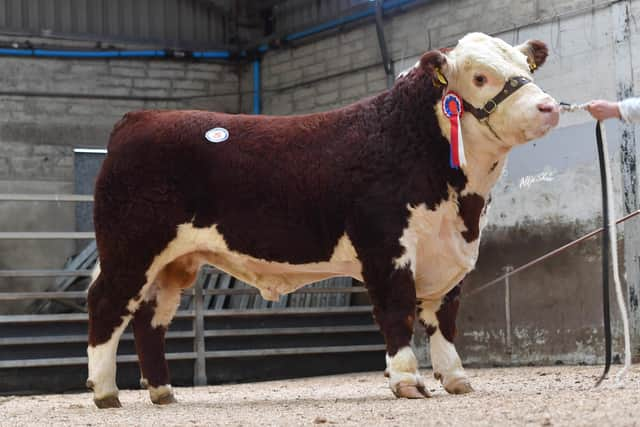Hereford breed ticks all the boxes
and live on Freeview channel 276
Farming and food production have been the focus of attention for a variety of reasons as supply chains have been threatened by the effects of global pandemic, environmental regulation and now a full scale war in Europe creating volatility at an unprecedented level.
Many of our established perceptions are being overturned and good practice in livestock production may be defined very differently as farmers seek to survive in the new order which will emerge from the current chaos.
Advertisement
Advertisement
“I believe that beef production based on early maturing cattle which use forage efficiently and perform well under low input systems will be best able to meet these challenges in the long term. Beef producers will need to focus on genetics which can deliver a low environmental impact, efficient feed conversion and a high quality eating experience which meets consumer expectation,” says Mark.


“Hereford is the breed which ticks all the boxes and offers the best solution to many of the major issues for beef producers. Herefords are “low impact” in terms of environmental emissions because they can be finished at an early age and, because the costs of production are significantly lower than the late maturing breeds, they can be the basis of a resilient model for beef production which will return a sustainable income for the farm business.”
This has been well demonstrated by the Irish Farmers Journal/Teagasc calf to beef project which compares various breed options for producing beef from the dairy herd. The Hereford crosses on this extensive trial are finishing readily off grass with much lower feed input than the other breeds which require an extended winter feeding period before reaching slaughter condition. The benefits in terms of reduced costs, improved cash flow and the lower requirement for housing and slurry capacity counts into a significantly more profit from the Herefords.
Suckler farmers too are finding that Hereford sires can add to their profitability through cost reduction. The natural early maturity and easy fleshing of the Hereford is a major advantage where bull calves are to be marketed by 16 months of age.
Advertisement
Advertisement
Hereford cross calves will readily achieve the required level of finish at lower feed rates and in a shorter time frame than most of the breeds commonly used by suckler farmers. When added to the breed’s advantages in terms of fertility, calving ease and higher calving percentage, the Hereford sire can significantly improve the efficiency and profitability of a suckler enterprise.